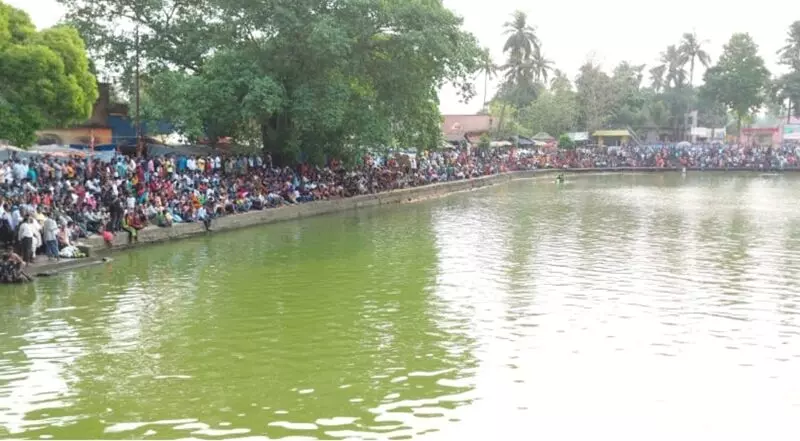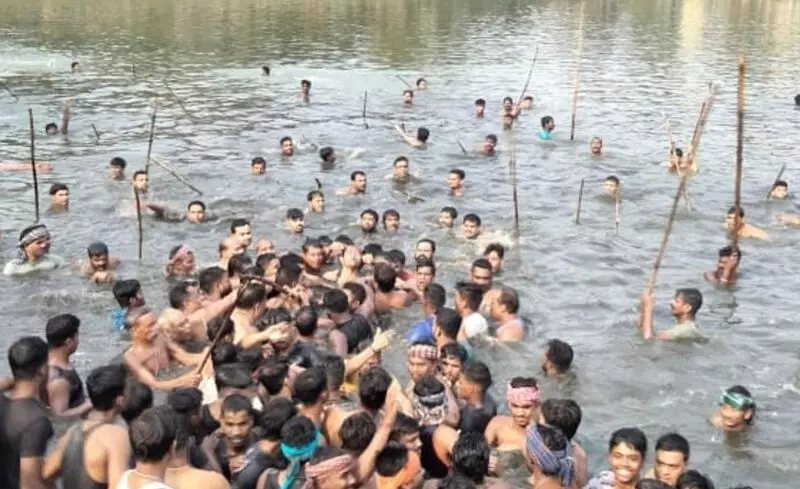Singhpur village in Odisha’s Jajpur district wore a festive look today, on April 14, as almost 15,000 devotees thronged the local Narayan temple on the occasion Odia new year or Pana Sankranti to observe the ritual of worshipping an idol of a deity called ‘Narayan Goswami’ which has been submerged in the temple pond for more than 450 years.
The ritual, which had been suspended for the last two years due to restrictions on mass gatherings arising out of the COVID-19 pandemic, marks a historic event which is tantamount to the state’s medieval past.
“The deity has been placed in the temple’s pond since 1569. Each year devotees take out the deity from the pond for three days and worship the three feet tall granite stone idol of the deity in the Narayan temple in Singhpur village. As per the tradition Rani Aparna Dhir Singh Bharadwaj of Gadamadhupur first worshipped the deity after its emergence from the pond in 1569,” said Pramod Pati, the priest of the Narayan temple told Gaon Connection.

Narayan Goswami deity has been submerged in the temple pond for more than 450 years.
A tale of love, war, conversion and estrangement
During the 1560s, Odisha’s neighbouring state Bengal was ruled by an Afghan Sultan named Suleiman Kirrani who effectively ruled it as a de facto provincial governor of the Mughal emperor Akbar.
“As per the legend, the Afghan ruler was impressed by the military leadership prowess of an Odia Brahmin named Kalachand Roy. The Brahmin general of a provincial army in Odisha was approached by Kirrani to lead his army and was appointed as the commander of the Sultan’s army. With the passage of time, the Odia commander fell in love with the Sultan’s daughter,” Mahendra Pati, a priest of the Narayan temple, told Gaon Connection.

Almost 15,000 devotees thronged the local Narayan temple on the occasion of Odia new year to observe the ritual of worshipping the idol.
“The sultan asked his Hindu commander to embrace Islam in order to marry his daughter. The commander agreed after some hesitation but later the marriage didn’t work well and he wanted to return to his earlier Hindu faith. When he approached the Odia priests to perform a ritual to formalise his return to Hinduism, the priests refused which angered the commander. He returned with the Sultan’s army and wreaked havoc on the temples in Odisha with a hatred against idol worship. This temple hid its most revered idol in the pond to protect it in 1569,” the priest added.
A few days later, the local King of Madhupurgarh kingdom (present day Jajpur) had a dream in which Lord Vishnu asked him to take out the idol from the water and worship it.
“Since then, the idol is taken out of Singhapur pond for a three-days. As per the age-old tradition, after three days, the villagers will hide the deity again in the pond,” the priest added.




















